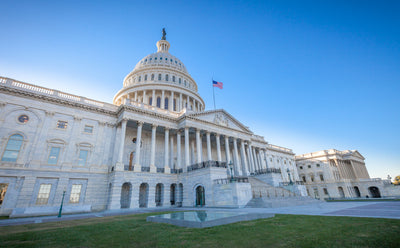PFAS and The Safe Drinking Water Act
RSS
Analies Dyjak, M.A. | Policy Nerd
The U.S. House Committee on Energy and Commerce recently held a virtual hearing about the nation's drinking water. The hearing discussed how Congress can revamp the Safe Drinking Water Act (SDWA) to better protect public health. Our team at Hydroviv has been aware of its shortcomings for years, and even testified on a similar subject last October. This blog highlights some of the major regulatory hurdles, and why it’s so difficult to regulate new tap water contaminants like PFAS.
What is the Safe Drinking Water Act?
The Safe Drinking Water Act (SDWA) was created by the Environmental Protection Agency in 1974, to protect drinking water sources throughout the United States. The SDWA is responsible for setting national standards called National Primary Drinking Water Standards for roughly 90 contaminants. Unfortunately, it’s widely accepted throughout the scientific community that the SDWA is outdated, and no longer works to protect public health.
EPA, Bureaucracy, and "Sound Science":
Both members of congress and the scientific community are critical of EPA’s approach to regulating drinking water. The current process has failed to regulate a new contaminant since 1996. This is especially alarming at a time when chemical and industrial manufacturing are at an all time high. Any type of industrial activity can make surrounding waterways susceptible to pollution, resulting in compromised drinking water. Chemicals developed in the last 24 years go entirely unchecked by the time they enter your municipal water system. What’s worse is the bottled water companies use the same contaminated sources as tap water, and follow weaker reporting standards. EPA claims to preach "sound science," but has failed to follow scientific recommendations.
PFAS and The Safe Drinking Water Act:
The recent hearing on the SDWA was prompted by the fact that a category of known human carcinogens called Per and Polyfluoroalkyl Substances (PFAS) are not regulated under this law. PFAS are known to cause an increased risk of cancer, an increased risk of miscarriage, and other adverse health effects. Because PFAS are not regulated, municipalities are not required to test for or remove PFAS from tap water. The EPA has created non-enforceable public health advisories for two different types of PFAS; PFOA and PFOS. Certain states have developed their own more stringent health advisories and some have even created enforceable standards. Health advisories use the best available science and epidemiological studies to determine a “safe” level of contamination in drinking water. While the goal of a health advisory is certainly positive, they fail to create actionable change. Health advisories are not enforceable, and therefore municipal water providers are not required to follow them. It's also important to mention that PFAS are not a "new" contaminant, and that they have been on EPA's radar for years. EPA first recommended setting a public health goal for both PFOA and PFOS eleven years ago in 2009.
Is a National PFAS Standard Realistic?
Proponents for a National Standard: When states have a variety of different public health advisory levels or even state standards, it creates a lapse in risk communication and fosters distrust. Public distrust may occur if “state A” has a lower PFAS standard than “state B.” This is especially true for neighboring states that may share the same aquifer, river, or tributary. Proponents believe that if EPA has enough scientific evidence to develop a Public Health Advisory, they should be able to create a national enforceable standard for PFAS.
Opponents for a National Standard: Municipalities lose big time whenever a new water quality standard is created. Opponents believe that imposing a regulation, and requiring municipal water treatment facilities to purchase expensive equipment that will remove a contaminant that is not present in their water, is not a responsible use of resources. One of the issues with this argument is that there is no federal mandate for testing, so most municipal systems don’t even know if PFAS are present. Some regulators claim that there are too many types of PFAS to regulate, and that it’s impossible to set a standard for the entire category of PFAS. Currently, there are only testing standards for 29 different PFAS variations, despite there being over 5,000 known variations present in the environment.
Our Take:
The SDWA impacts people every single day. Every time someone turns on their water, the health and safety of what’s coming out of their tap is dictated by the Safe Drinking Water Act. As is, the SDWA does not go far enough to protect American’s, including our most vulnerable populations (infants, pregnant moms, and older adults). Industrial manufacturing companies are entirely unrestricted when it comes to developing new products, and chemicals pushed to the market are essentially “safe” until proven otherwise. This sort of regulatory approach comes at a serious cost to human health. Regarding PFAS, there is enough scientific and epidemiological research to conclude that this category of chemicals should be regulated under the Safe Drinking Water Act.
Other Articles We Think You Might Enjoy:The Ins and Outs of Drinking Water Regulation
Hydroviv's PFAS Update: 2020
Military Bases Have The Highest Levels of PFAS




